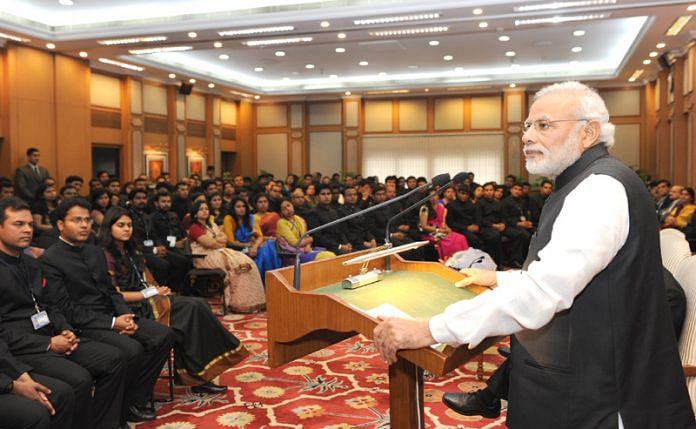New Delhi: The Narendra Modi government last week appointed a fresh batch of IAS officers as assistant secretaries in different ministries — the fifth batch to be given exposure to the workings of the central government right after their induction.
In the past, IAS officers would go directly to their state cadres on completion of their preliminary training after induction, but now, they work for a period of three months in the central government before heading to their respective state cadres.
Young officers believe this reform has helped them tremendously in understanding the nuances of central government functioning, networking with senior officers and demystifying the power corridors of Delhi.
The reform was introduced by the Modi government in 2015, with the 2013-batch IAS officers being the first to be appointed as assistant secretaries.
“Earlier, it would take up to nine years for an officer to come to the central government. But this programme allows the youngest officers to establish a camaraderie with the senior-most officers from the beginning,” said Athar Aamir Khan, a 2016-batch IAS officer who completed his three-month programme last year.
“It is a wonderful reform,” he added.
Also read: IAS, IFS, IRS officers hail Modi govt crackdown on ‘corrupt’ colleagues
The project at the end of the programme
Through the three months of their posting, officers are required to work on projects — any new policy in their areas — and present it to their ministries on completion of the programme.
“Initially, 36 projects are selected out of all the projects to be presented to all the secretaries in the government. Subsequently, 16 are selected to be presented to the cabinet secretary, and finally, eight are presented to the PM,” said Khan, whose project was one of the eight to be presented to the PM.
“Some of those projects are implemented by the government, and you get a sense of contribution at the highest level of decision-making right in the beginning of your career.”
Ashish Sangwan, another 2016-batch IAS officer from the Madhya Pradesh cadre, agreed. “Even if your project is not implemented, you get a detailed sense of how things work in government of India,” he said.
“From the budgeting to policy-making to filing, you get a sense of how things work at the highest levels because, of course, the scale at which the central government and state governments work is very different.”
According to Rakesh Srivastava, who retired as secretary to the Government of India earlier this year, these projects are taken very seriously by the young officers since they are included in their Annual Confidential Reports.
Also read: These 10 groups of IAS officers and scientists will set the agenda for Modi’s governance
Networking with senior officers
The new programme, known to be a brainchild of Prime Minister Modi, has also given the opportunity to young officers to network with the most senior officers from across services, Khan pointed out.
“Right from the start, secretaries and joint secretaries ask you to accompany them for high-level meetings that have a nationwide impact,” he said.
“Other than the obvious advantage of giving you exposure, it also demystifies the central government for us, and makes us develop a camaraderie with seniors. These are 1982- or 1983-batch officers, who we would have otherwise been scared to approach.”
The networks built during the three-month stint continue to help young officers even when they report to their cadres.
“The programme has allowed us to open up a direct channel of communication with seniors… So even now, while implementing government of India schemes, we can just call them up directly in case of any confusion,” Sangwan said.
Young officers would ordinarily not get a chance to interact with the PM, cabinet secretary etc., but this programme has given them the opportunity to interact with them directly, Srivastava said.
“The PM and the Cabinet Secretary are particularly invested in this programme… So it has been very enriching for most young officers,” he said.
Also read: Dalit IAS, IRS officers say absence of quota in Modi govt lateral entry scheme is illegal



